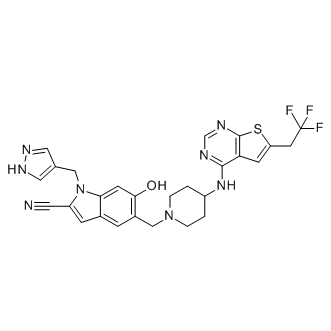The first auditory neurons, the spiral ganglion neurons, connect the hair cells of the auditory system with higher regions of the central auditory pathway. Interactions between inner hair cells and afferent fibres of the SGN occur in terms of signal transmission via glutamate release from depolarized hair cells and in terms of trophic support with growth factors like BDNF and NT3 delivered from the hair cells. Both kinds of interaction are essential for the maintenance of the homeostasis and functionality of the SGN. Therefore, age-, drug- and noise-induced damage and loss of the hair cells consequently causes a successive secondary degeneration of the SGN due to the absence of functional innervation and deprived neurotrophic support. However, recent evidence shows that SGN degeneration in humans is not dependent on hair cell loss. In addition, using a mouse model, the role of supporting cells in the maintenance of SGN was demonstrated. One therapeutic measure to moderate or compensate the loss of the hair cells is the treatment with a cochlear implant that directly stimulates residual SGN. Although this is an ongoing controversial discussion, it is still believed that the benefit of such a cochlear implant strongly depends not only on the excitability of the SGN, but also on the number of surviving neurons. Thus, current research focuses on the preservation of unaffected and the regeneration of deprived SGN in addition to the electrical innervation provided by the cochlear implant. A potent approach to increase the viability of SGN in vitro and in vivo is the external application of BDNF. In the cochlea,  the protective effect of BDNF is primarily promoted by the activation of the high-affinity tyrosine kinase receptor B. TrkB signals via an intracellular cascade that is connected to the extracellular signal-regulated kinase /mitogen-activated protein kinase pathway. This finally induces the phosphorylation and thereby activation of the cyclic adenosine monophosphate -response element-binding protein. CREB in turn triggers the expression of survival promoting genes within the SGN. Another important activator for CREB-mediated neuroprotection is cAMP. The multifunctional second messenger cAMP promotes neuronal differentiation and survival as well as outgrowth, regeneration and guidance of neuronal processes. Carefully increased concentrations of cAMP, as evoked by the application of cAMP analogues, promote the survival and enhance fibre elongation of SGN in vitro. Another more clinically relevant option to increase cAMP levels in neurons is the application of specific phosphodiesterase type 4 inhibitors such as Rolipram. So far, several studies have demonstrated neuroprotective and anti-inflammatory effects of LY2157299 Rolipram after lesions of the central nervous system. Additionally, neuroregeneration and axonal outgrowth can be enhanced by Rolipram application. Different studies reported that its beneficial effects can be enhanced when applied in combination with other protective factors or substances. In order to exert its neuroprotective effect, Rolipram increases the level of intracellular cAMP. As recently demonstrated by Xu et al., 2012, the beneficial effect of intracellular cAMP on SGN critically depends on low cAMP concentrations. A previous study of our group demonstrated a protective effect on SGN in vitro only if Rolipram was delivered encapsulated in lipid nanocapsules. However, this neuroprotective effect was not FTY720 observed after treatment with pure Rolipram. One explanation could be that the used Rolipram concentration induced an increase of cAMP too high to promote the protective effect demonstrated by cAMP analogues. Therefore, the aim of the present study was to clarify if a Rolipram-induced increase of cAMP can be clinically relevant for the protection of SGN.
the protective effect of BDNF is primarily promoted by the activation of the high-affinity tyrosine kinase receptor B. TrkB signals via an intracellular cascade that is connected to the extracellular signal-regulated kinase /mitogen-activated protein kinase pathway. This finally induces the phosphorylation and thereby activation of the cyclic adenosine monophosphate -response element-binding protein. CREB in turn triggers the expression of survival promoting genes within the SGN. Another important activator for CREB-mediated neuroprotection is cAMP. The multifunctional second messenger cAMP promotes neuronal differentiation and survival as well as outgrowth, regeneration and guidance of neuronal processes. Carefully increased concentrations of cAMP, as evoked by the application of cAMP analogues, promote the survival and enhance fibre elongation of SGN in vitro. Another more clinically relevant option to increase cAMP levels in neurons is the application of specific phosphodiesterase type 4 inhibitors such as Rolipram. So far, several studies have demonstrated neuroprotective and anti-inflammatory effects of LY2157299 Rolipram after lesions of the central nervous system. Additionally, neuroregeneration and axonal outgrowth can be enhanced by Rolipram application. Different studies reported that its beneficial effects can be enhanced when applied in combination with other protective factors or substances. In order to exert its neuroprotective effect, Rolipram increases the level of intracellular cAMP. As recently demonstrated by Xu et al., 2012, the beneficial effect of intracellular cAMP on SGN critically depends on low cAMP concentrations. A previous study of our group demonstrated a protective effect on SGN in vitro only if Rolipram was delivered encapsulated in lipid nanocapsules. However, this neuroprotective effect was not FTY720 observed after treatment with pure Rolipram. One explanation could be that the used Rolipram concentration induced an increase of cAMP too high to promote the protective effect demonstrated by cAMP analogues. Therefore, the aim of the present study was to clarify if a Rolipram-induced increase of cAMP can be clinically relevant for the protection of SGN.
To avoid ineffective high marine actinobacteria for activity under in vitro and in vivo conditions
Leave a reply